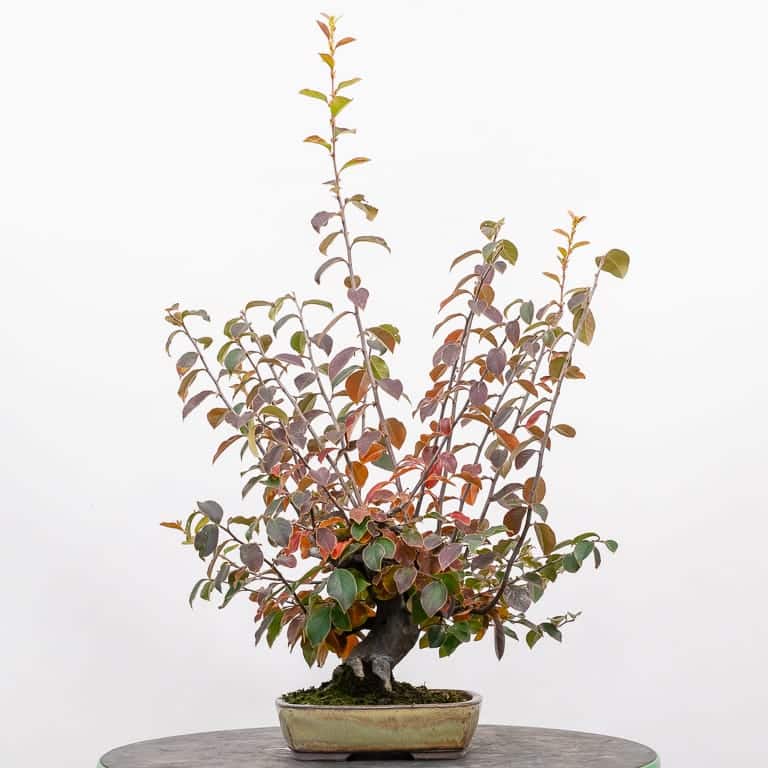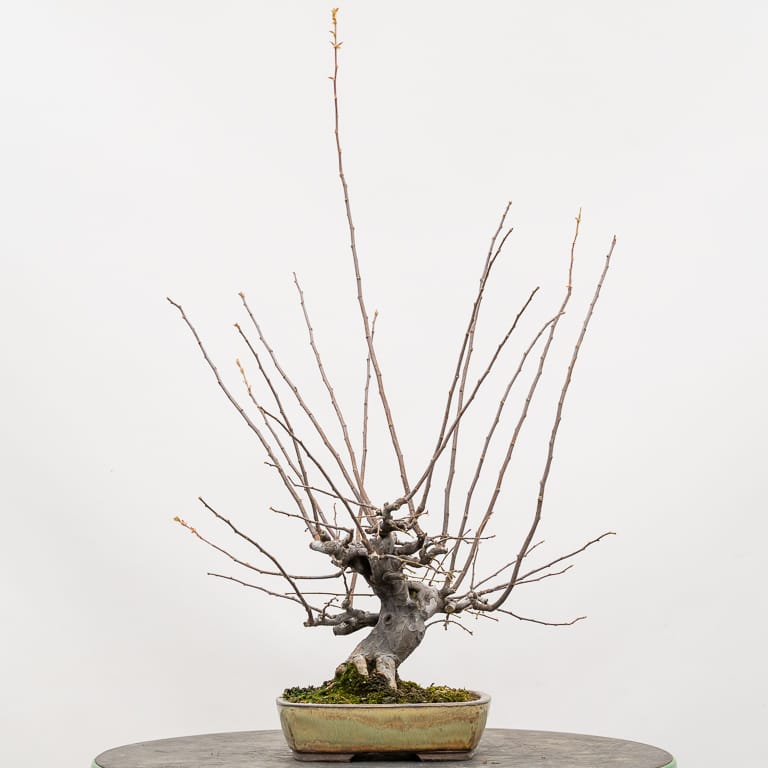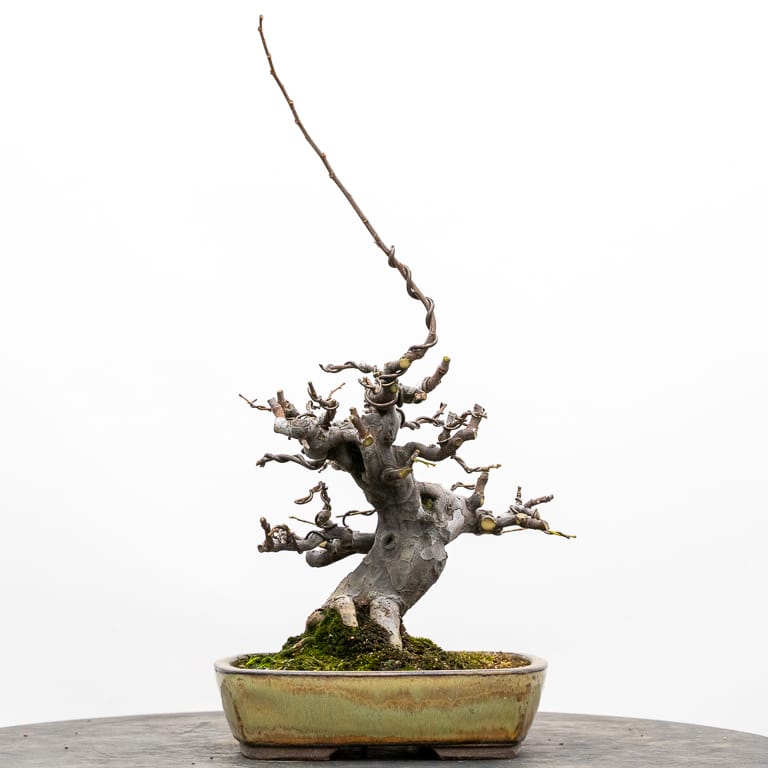Over the past few years I’ve wrestled with a question about developing Chinese quince: how do you encourage branches to bifurcate after pruning?
I haven’t come up with an answer, but I did notice something heartening when I cleaned up an older specimen last week.
Instead of keeping the summer growth in check, I let the tree grow freely after cutback in May (see “Spring cutback” for details). As a result, the tree produced many long vertical shoots.

Long shoots on Chinese quince
After removing the leaves, however, I noticed a handful of slender horizontal shoots.

Slender horizontal shoots visible after removing the leaves
I’ve worked with these branches on young quince for years but hadn’t thought of them as possibly contributing to the refinement of older quince as they can die back when more vigorous shoots are growing nearby.
To give them a chance to compete with the stronger shoots, I pruned the long shoots and wired, but did not prune, the slender ones.

After cutback and wiring – 15″
What made me smile when I saw the slender shoots is that most sprouted from back buds. If they gain vigor next year, they might be part of the answer to how we can improve branch density on Chinese quince.
If they don’t end up contributing, I can take comfort in the incremental progress that I’m seeing in the more vigorous branches.
Subscribe to Bonsai Tonight
New Posts Delivered Every Tuesday and Friday
Lani says
Jonas that is a beautiful little quince. What a nice surprise to find the smaller branches underneath and it’s great that you’ve pointed this out. When growing deciduous material, there is so much “growing out, then cutting back” to achieve thicker trunks and ramification. I don’t have Chinese quince, but my pomegranates seem to behave with the similar growth.
Five years ago, I planted Japanese Quince seeds and I love their red and orange blossoms. However, I wasn’t aware at the time that there was a (big) difference between the Japanese vs Chinese quince. Can you help me understand why this is?
Jonas Dupuich says
Thanks, Lani! Japanese and Chinese quince are both in the rose family but they’re more like cousins than siblings. Chinese quince are unique trees in that they are the only species belonging to the Psuedocydonia genus. That said, they are closely related to both Chaenomeles and Cydonia.
JimmyG says
Jonas, one of the pre-bonsai Chinese Quince I got from you earlier this month has just bloomed and the leaves are all shiny dark green : ) I know they can bloom in the fall, but do these guys go into dormancy for the winter? Do I need to think of defoliating at some point as you have?
Jonas Dupuich says
Hi, Jimmy! If the leaves don’t fall off by the end of December I cut them off so the tree gets a short break before leafing out again. If it gets colder I expect at least some of the older leaves will fall off, but some years the trees grow straight through our “winter.”
Philippe St-Jacques says
Hello Jonas,
It seems normal that letting strong branches grow unrestrained for the complete growing season will gather most of the available resources and let very few for the small shoots grow. But at the same time, letting branches grow freely means the plant will gather a lot of resources and maybe that is what triggered the dormant buds at the base to grow. In the nature those small buds would have been suppressed and shaded by the large suckers. However the hand of the artist decided otherwise. By cutting back the strong shoots those small basal shoots were given the 5 % chances that would have let them grow in the nature, if the larger branch was cut by a storm or an herbivore. A lot to think about, our place in our trees lives.
Jonas Dupuich says
Hi Philippe – I like the way you’re thinking about this. The trees respond to our work and we respond to how the trees grow. Somewhere in that mix a form takes shape that demonstrates the history of the relationship.
Carol Ebreo says
I just got a Chinese quince and would like to know how to proceed I guess this spring. I have been reading as much as I can never owned one.
Jonas Dupuich says
Hi Carol! If you have other deciduous species, the work is similar. Let branches grow that you’re trying to thicken and cut back to 2-3 buds on branches you’re trying to refine.
If you have specific questions about your tree, feel free to post them to the forum: https://ask.bonsaitonight.com/
John Wright says
I have a similar Chinese Quince and am very interested to see how this works out. Please keep updates coming.
Jonas Dupuich says
Will do John, thanks for the note!